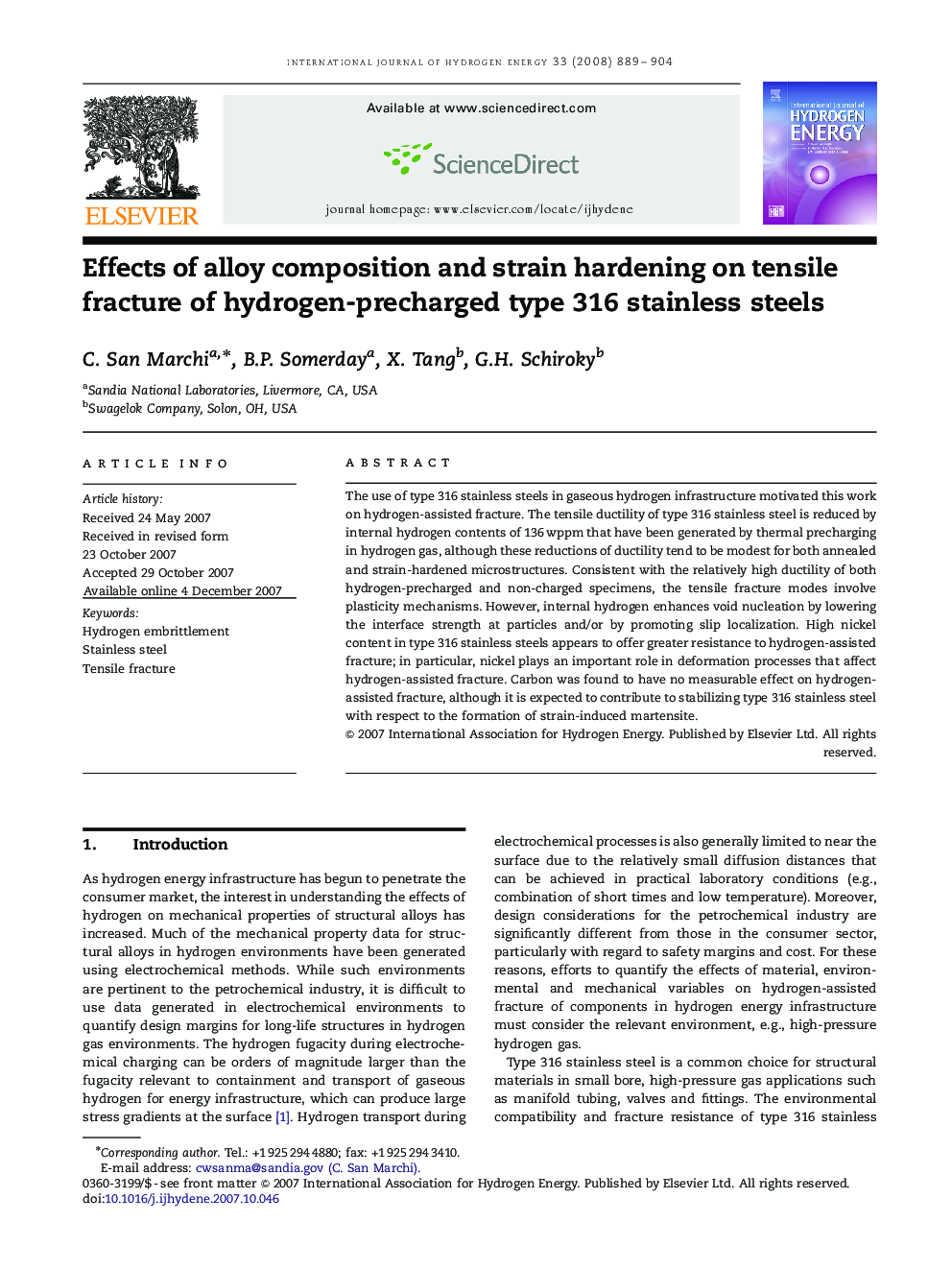| Article ID | Journal | Published Year | Pages | File Type |
|---|---|---|---|---|
| 1280020 | International Journal of Hydrogen Energy | 2008 | 16 Pages |
The use of type 316 stainless steels in gaseous hydrogen infrastructure motivated this work on hydrogen-assisted fracture. The tensile ductility of type 316 stainless steel is reduced by internal hydrogen contents of 136 wppm that have been generated by thermal precharging in hydrogen gas, although these reductions of ductility tend to be modest for both annealed and strain-hardened microstructures. Consistent with the relatively high ductility of both hydrogen-precharged and non-charged specimens, the tensile fracture modes involve plasticity mechanisms. However, internal hydrogen enhances void nucleation by lowering the interface strength at particles and/or by promoting slip localization. High nickel content in type 316 stainless steels appears to offer greater resistance to hydrogen-assisted fracture; in particular, nickel plays an important role in deformation processes that affect hydrogen-assisted fracture. Carbon was found to have no measurable effect on hydrogen-assisted fracture, although it is expected to contribute to stabilizing type 316 stainless steel with respect to the formation of strain-induced martensite.
